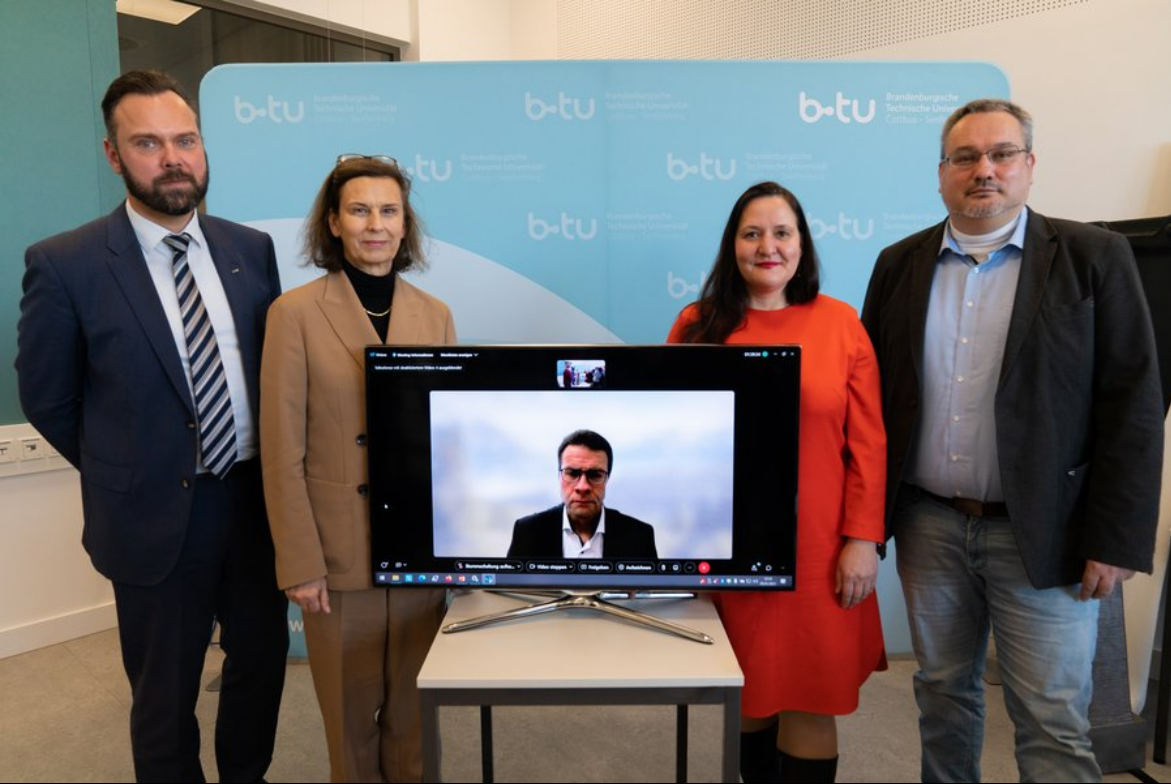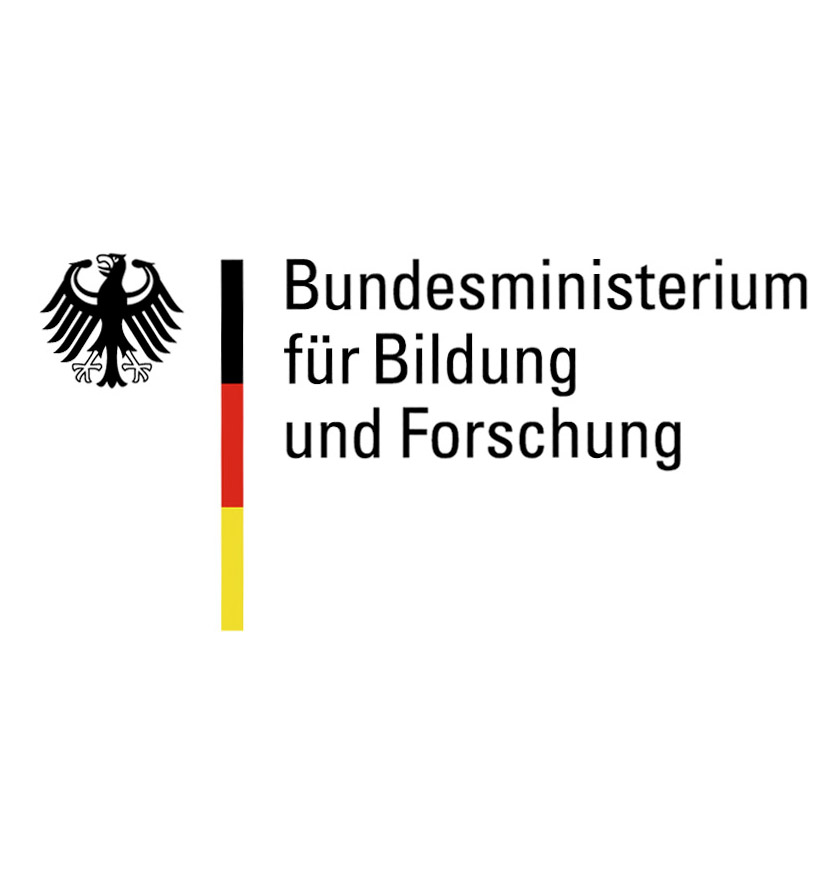52.44 million euros for research on sustainable energy technology in Lusatia
Climate-friendly processes for energy generation, conversion and storage are being developed by researchers at Brandenburg University of Technology Cottbus-Senftenberg and the Fraunhofer-Gesellschaft together with more than 70 partners from science, industry and society in the joint project SpreeTec neXt. The project is funded by the German Federal Ministry of Education and Research.


In the joint project "New Manufacturing Technologies for Components and Systems of Decentralized Energy Technology (SpreeTec neXt)", scientists from the Brandenburg University of Technology Cottbus-Senftenberg (BTU), the Fraunhofer Institute for Applied Polymer Research IAP and the Fraunhofer Institute for Material and Beam Technology IWS are working together with an interdisciplinary partner network to develop solutions for the many challenges along the value chain. The focus is on the resource-efficient design and production of components and systems such as local generation and storage solutions. These include hydrogen-based energy conversion in turbines and fuel cells, the design of efficient integrative heat exchanger systems, and the combination of novel hybrid photovoltaic and solar thermal collectors.
"SpreeTec neXt bundles interdisciplinary know-how from research and practice along our profile line 'energy transition and decarbonization'," says BTU President Prof. Dr. Gesine Grande. "Innovative technologies that enable the control and economic operation of decentralized energy technology are gaining immense importance and have enormous market potential. Through research into highly efficient material systems and the associated manufacturing technologies, as well as transfer, we are unlocking this enormous potential."
Parliamentary State Secretary at the Federal Ministry of Education and Research Mario Brandenburg says: "The energy supply of the future must be reliable, affordable and climate-neutral. With SpreeTec neXt, the Federal Ministry of Education and Research is making an important contribution to this. The project is driving forward the development of production technologies for the use of decentralized and consumer-oriented energy technology. It is important that the value creation system is viewed holistically: The focus is on research, planning and production of the energy technology on the one hand, and on the future utilization of the products in the circular economy on the other. The close interaction between research and development and industry supports innovative strength and ensures new, long-term value creation in the region."
Brandenburg's Science and Research Minister Dr. Manja Schüle: "For a sustainable, environmentally friendly energy transition in Germany, we need intelligent, efficient and safe energy systems. Groundbreaking ideas and practical answers come from Lusatia, specifically from the BTU Cottbus-Senftenberg with SpreeTec neXt. In this project, BTU scientists and researchers are working with an interdisciplinary partner network to develop new manufacturing technologies for components and systems in decentralized energy technology, including local generation and storage solutions. I am convinced that Cottbus will establish itself as a supraregional center for energy research. At 'SpreeTec neXt', the gears of innovation mesh - this is what successful structural change 'Made by future' looks like!"
Martin Plettig, Head of Research and Development at Forster System-Montage-Technik GmbH adds: "Through SpreeTec neXt, the BTU is widening the bottleneck spatially and thematically to the small, medium-sized companies in the region. In practical terms, SpreeTec neXt, as a supporting pillar of science, specifically complements local, entrepreneurial initiatives. In cooperation with the district's economic development agency and the municipality, all local players are thus jointly shaping the structural change at the location of the event with their respective competencies. This is exactly what is needed! The first successes are already emerging in the initiative for the establishment of the FABRIC Lausitz technology center in Forst. Networked, interdisciplinary competencies and modern manufacturing technologies are anchored in complex value-added processes and strengthen the regional economy sustainably and, above all, on a broad scale."
Prof. Dr.-Ing. Christoph Leyens, Director of the Fraunhofer Institute for Material and Beam Technology IWS, underlines the importance: "In the joint project SpreeTec NeXt, forward-looking, highly efficient solutions for the energy industry are being developed, which can contribute significantly to the success of the energy transition. The BTU Cottbus-Senftenberg and the Fraunhofer Institutes IAP and IWS are working closely together to develop hybrid material systems and highly efficient manufacturing technologies. They thus sustainably support structural change in Lusatia, facilitate the technological transformation of local industrial companies and facilitate their access to new markets beyond the lignite industry."
Optimized construction methods, tailored material systems and digitalized production techniques
"Future decentralized energy supply systems must have a high degree of variability and scalability," says project leader Prof. Dr.-Ing. Holger Seidlitz, head of the BTU Chairs of Polymer-Based Lightweight Construction and Joining and Welding Technology and of the research division Polymer Materials and Composites PYCO at the Fraunhofer Institute for Applied Polymer Research IAP. "We achieve efficiency and cost-effectiveness in the development and manufacture of new products when material systems, construction methods and manufacturing processes, as well as quality assurance, maintenance, repair and recycling, are considered consistently and universally. With conventional, linear production technologies, these requirements can neither be met technologically nor justified economically due to the high degree of complexity."
In addition to the traditional branches of the energy industry in Lusatia, the metal and plastics processing industry is linked to energy technology like hardly any other economic sector. In order for these companies to participate in the potential of environmentally friendly technologies, new business models, products and processes are needed to expand the overall offering. Efficient plastic- and metal-based material systems with associated manufacturing technologies and their optimally coordinated interaction in new system solutions are the focus of a planned overarching collaboration that will bring together scientific research and industry. Planned technology transfer centers at the companies' sites will support direct on-site exchange. "The planned technology chain will be available in the future in the form of an innovation center at BTU," says co-initiator Prof. Dr.-Ing. habil. Vesselin Michailov. "Industrial users will be able to continuously transfer the competencies acquired in the project to new materials and components in it even after the project ends."
Funding for the SpreeTec neXt joint project is provided by the federal government's Structural Strengthening Act. The Federal Ministry of Education and Research is funding the project with up to 52.44 million euros over a period of seven years. These funds will be used to create 38 new positions for scientists researching manufacturing technologies for components and systems in decentralized energy technology.
About SpreeTec neXt
The SpreeTec neXt research network is located within a corridor along the Spree River that connects Lusatia and Berlin with their research institutions, companies, associated and social partners. The scientific partners submitting the application are the Brandenburg University of Technology Cottbus-Senftenberg, the Fraunhofer Institute for Applied Polymer Research IAP and the Fraunhofer Institute for Material and Beam Technology IWS with the planned Innovation Center for Photonic Material and Production Technology (IPWP).
Central fields of action in the project are:
- customized material systems,
- manufacturing technologies,
- simulation and digitalization,
- sustainability and Life Cycle Assessment.
SpreeTec neXt has the effect of precisely strengthening the region as a location for research and industrial innovation. It creates forward-looking technologies, products and services that are directly taken up by companies on the basis of the joint scientific-technological platform and implemented industrially. The development of participative structures and the cooperation of scientists and employees from companies guarantees the education and training of highly qualified specialists, who permanently establish the innovative power of the region.
Structural Strengthening Act Coal Regions
In 2018, the German government had set up the "Growth, Structural Change and Employment" commission, which consisted of various stakeholders from politics, business, environmental associations and trade unions in the affected regions. Its aim was to establish a broad social consensus on how to shape the coal phase-out, which is based on energy and climate policy, and the associated structural change in Germany. The "Coal Regions Structural Strengthening Act", which came into force on August 14, 2020, implements the Commission's structural policy recommendations and provides for funds totaling up to 40 billion euros to be used in the coalfields by the end of 2038. In the regions concerned, the structural strengthening funds will be used among other things to promote research projects that actively support structural change, e.g. by providing new impetus for the creation of value chains and jobs.
Last modified: